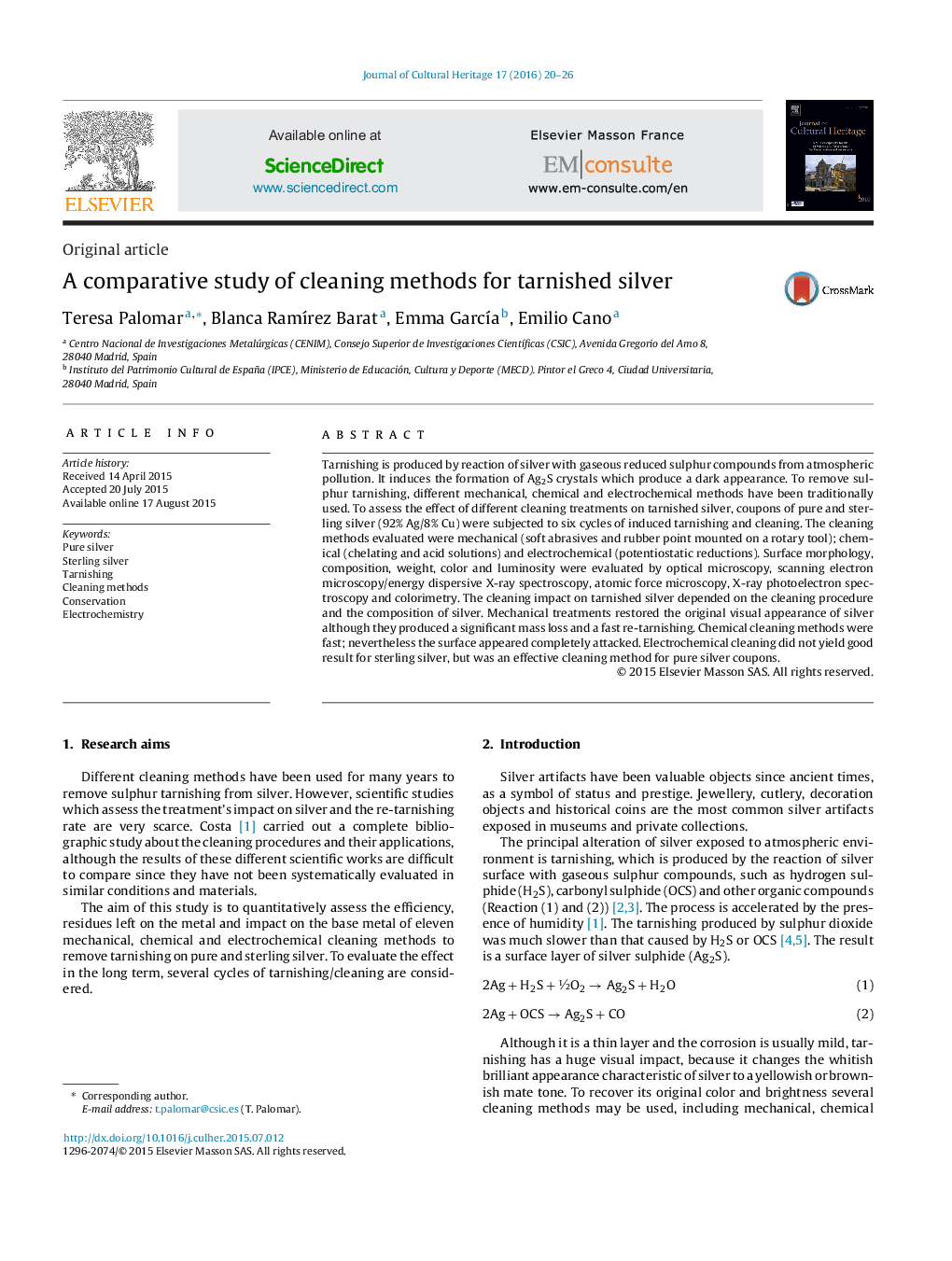| Article ID | Journal | Published Year | Pages | File Type |
|---|---|---|---|---|
| 1037838 | Journal of Cultural Heritage | 2016 | 7 Pages |
Abstract
Tarnishing is produced by reaction of silver with gaseous reduced sulphur compounds from atmospheric pollution. It induces the formation of Ag2S crystals which produce a dark appearance. To remove sulphur tarnishing, different mechanical, chemical and electrochemical methods have been traditionally used. To assess the effect of different cleaning treatments on tarnished silver, coupons of pure and sterling silver (92% Ag/8% Cu) were subjected to six cycles of induced tarnishing and cleaning. The cleaning methods evaluated were mechanical (soft abrasives and rubber point mounted on a rotary tool); chemical (chelating and acid solutions) and electrochemical (potentiostatic reductions). Surface morphology, composition, weight, color and luminosity were evaluated by optical microscopy, scanning electron microscopy/energy dispersive X-ray spectroscopy, atomic force microscopy, X-ray photoelectron spectroscopy and colorimetry. The cleaning impact on tarnished silver depended on the cleaning procedure and the composition of silver. Mechanical treatments restored the original visual appearance of silver although they produced a significant mass loss and a fast re-tarnishing. Chemical cleaning methods were fast; nevertheless the surface appeared completely attacked. Electrochemical cleaning did not yield good result for sterling silver, but was an effective cleaning method for pure silver coupons.
Related Topics
Physical Sciences and Engineering
Chemistry
Physical and Theoretical Chemistry
Authors
Teresa Palomar, Blanca RamÃrez Barat, Emma GarcÃa, Emilio Cano,
